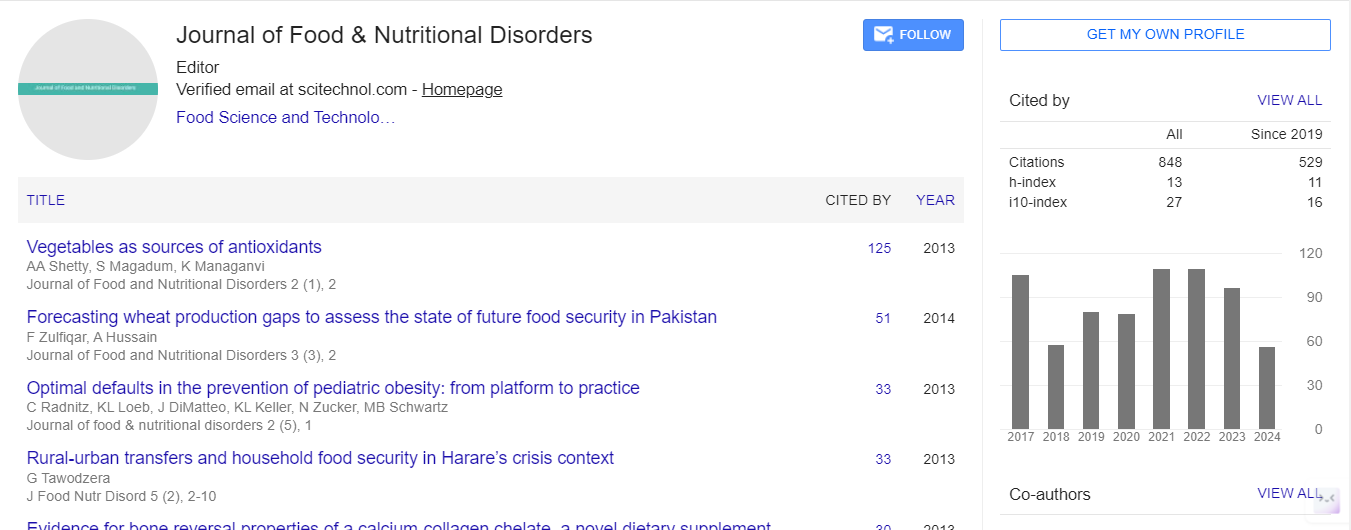Research Article, J Food Nutr Disor Vol: 7 Issue: 2
Nutritional Habits and Obesity: A Case Study among Pakistani Universities Students
Muhammad Irfan*
Department of Biochemistry and Molecular Biology, University of Gujrat, Gujrat, Pakistan
*Corresponding Author : Muhammad Irfan
Lecturer Biochemistry and Molecular Biology, Department of Biochemistry and Molecular Biology, University of Gujrat, Pakistan
Tel: 00923325242797
E-mail: Muhammad.irfan@uog.edu.pk
Received: March 14, 2018 Accepted: March 27, 2018 Published: April 02, 2018
Citation: Irfan M (2018) Nutritional Habits and Obesity: A Case Study among Pakistani Universities Students. J Food Nutr Disor 7:2. doi: 10.4172/2324-9323.1000249
Abstract
Objectives: To investigate the obesity intensity and relationship of socio-demographic factors like gender, residential area (Rural/Urban), Hostelite/Non-Hostelite on the nutritional habits and body mass index (BMI) among different public universities students of Pakistan. Methodology: A cross sectional survey was conducted for mentioned objectives from 10 Nov to 10 Dec 2017. Total of 442 students from five different public sector universities participated in the survey from age group 19 to 24 years. Results: Out of total 442 participants, 65.4% of participants were from urban areas and 34.6 % belong to rural areas of country. Regarding BMI; 261 (59.0%) were with Normal BMI, 113 (25.6%) were Underweight, 60 (13.6%) were Overweight and 8 (1.8%) were Obese. Statistical analysis done by using Chi-square test, which revealed positive correlation between nutritional habits and area of residence (P=0.035, Chi Value=8.627), while less convincing evidence in case of BMI and area of residence (P=0.603, Chi Value=1.855).Interdependence was observed in case of BMI and gender (p-value=0.010 (<0.05) whereas no significance relation was observed between nutritional habits and Hostelite/ Non-Hostelites (p-value=0.109 (>0.05). Conclusion: BMI calculation and statistical results revealed that significant proportion of students was in underweight (25.6%) and overweight (13.6%) category. Chi-square test validated that students from rural areas are more vegans as compared to urban areas. Applied statics confirmed the significant relationship between gender and BMI which revealed that more female students were underweight while more male were overweight. Urban areas subjects were under weight as compared to rural areas. There is dire need of nutritional education and awareness campaigns regarding healthy nutrition among students.
 Spanish
Spanish  Chinese
Chinese  Russian
Russian  German
German  French
French  Japanese
Japanese  Portuguese
Portuguese  Hindi
Hindi 
